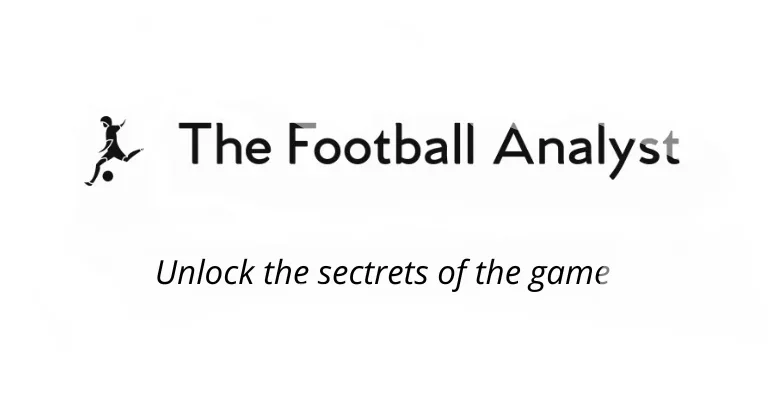When we talk about football intelligence, the conversation almost always starts with what players do on the ball — dribbling, passing, finishing. Yet, in the highest levels of the game, what often makes the difference is what happens away from the ball. The art of manipulating defenders and shaping space without ever touching the ball is one of the most underrated but decisive skills in modern football.
From Erling Haaland’s curved runs to Karim Benzema’s disguised movements and Vinícius Júnior’s explosive counter-movements, the game is full of examples where a run without the ball is as important as the final shot. This “invisible” skill forces defenders into bad positions, opens gaps for teammates, and creates decisive advantages that most fans barely notice in real time.
1. Counter-Movements: Drawing Defenders Before Attacking Space
One of the most effective ways to manipulate space is through counter-movements — moving in the opposite direction of your intended run to unbalance the defender.
Take Vinícius Júnior, for example. He often feints toward the ball, dragging his defender a step or two forward. Just as the defender closes the gap, Vinícius explodes into the space in behind the defender, perfectly timed with a through-ball.
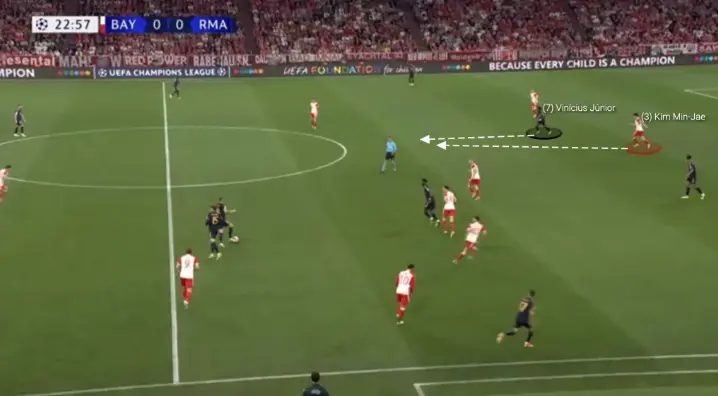
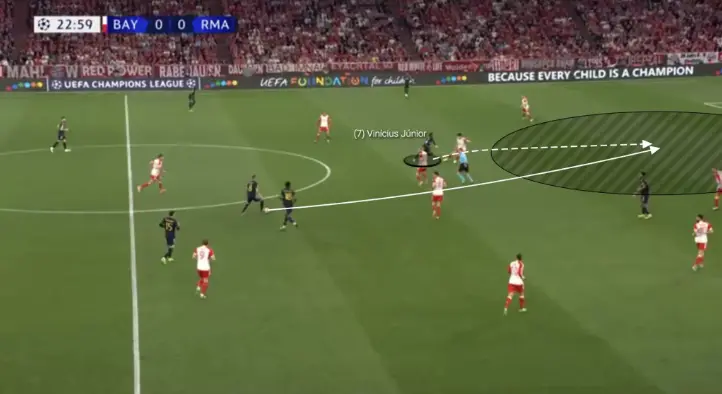
This works because defenders naturally react to the first movement. A well-timed counter-movement doesn’t just create separation — it creates the illusion of security before punishing hesitation.
Tactically, counter-movements also serve as decoys. Even if Vinícius doesn’t receive the pass, the simple act of pulling the defender forward creates a channel for Real Madrid’s midfielders to exploit.
2. Creating Passing Lanes Through Intelligent Runs
Beyond beating a single marker, off-ball movement can open entire channels of play. Haaland is particularly adept at this.
- Checking short: He drifts toward midfield, pulling a center-back with him and creating a vertical lane for a midfielder or winger to run into.
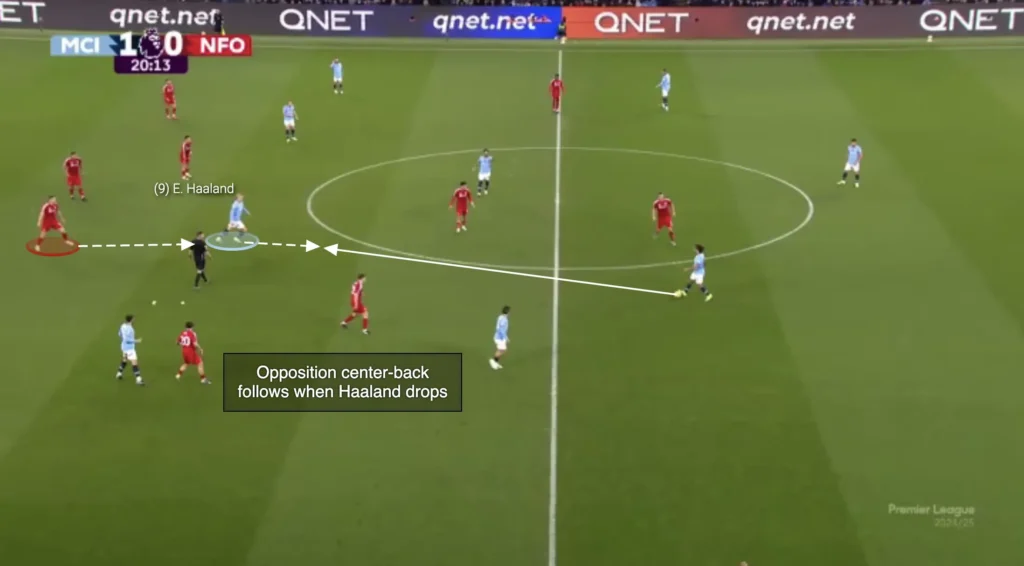
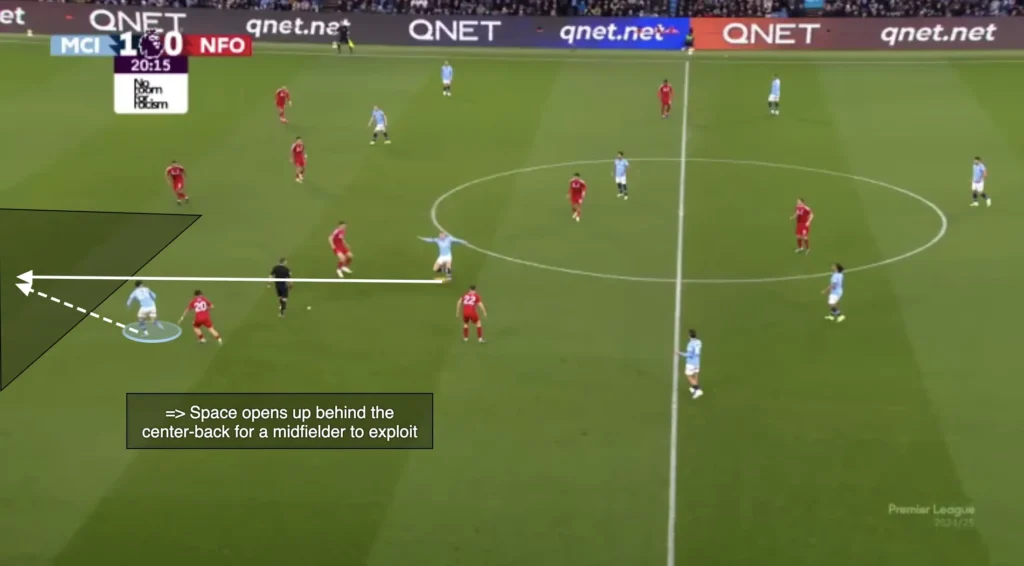
- Curved runs: Instead of attacking space in straight lines, Haaland arcs his runs. This forces the defender to turn their body at awkward angles while keeping him onside, destabilizing the backline’s organization.
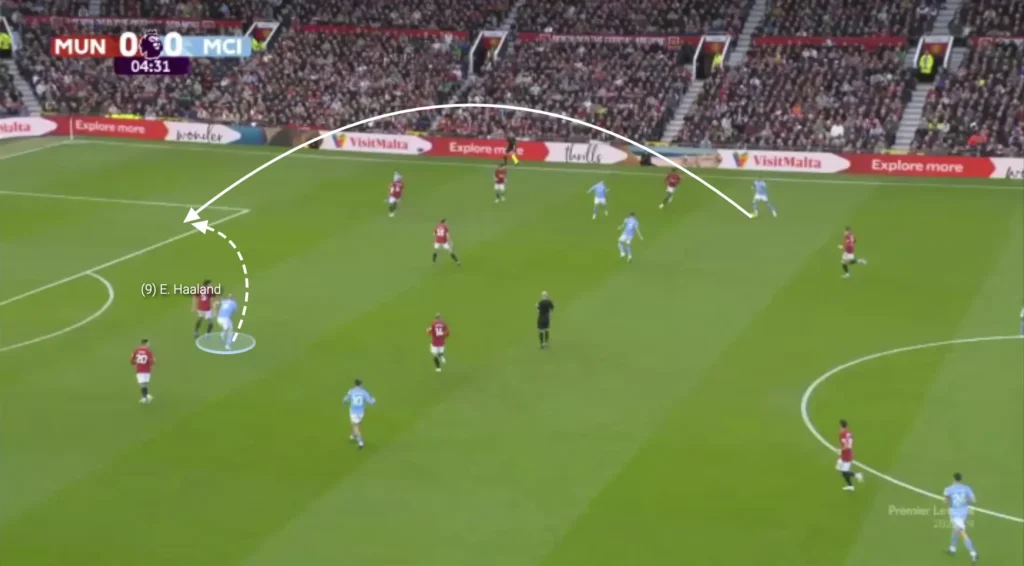
The principle is clear: movement isn’t just about finding space — it’s about creating it.
3. Stretching and Collapsing Defensive Blocks
In positional play systems, space is often created not by who has the ball but by who moves without it. Mohamed Salah’s diagonal sprints behind the line are a textbook case.
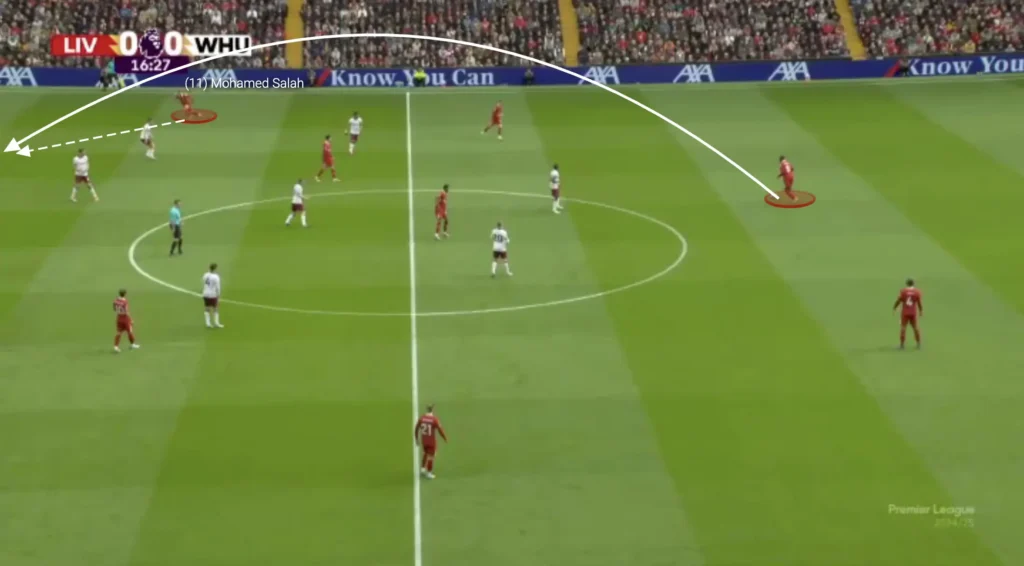
Even when he doesn’t receive the ball, those aggressive runs force the back line to drop, stretching them vertically. That in turn opens gaps between the lines, which Liverpool’s midfielders or fullbacks exploit.
The same principle works in reverse: collapsing defenders into one area by deliberately crowding a zone can free space elsewhere. The best forwards instinctively sense when to draw defenders in and when to stretch them.
4. Timing, Disguise, and Deception
Karim Benzema has mastered the subtler aspects of off-ball movement. Instead of explosive sprints, he often uses:
- Late arrivals into the box — jogging at the edge of the penalty area before accelerating into the six-yard box as the cross is delivered.
- Double movements — drifting toward the near post, then sharply darting toward the far post once the defender has shifted.
- Disguise — lulling defenders by standing still, only to move at the exact moment their attention turns to the ball.
These movements are devastating because they manipulate not just positioning, but the defender’s focus.
5. From Invisible to Measurable: Modern Analysis
Traditionally, these movements were hard to measure. Stats focused on passes, shots, and tackles — not the “invisible” actions that shaped them.
This is where tools like Impact Soccer change the game. Instead of relying on subjective impressions alone, analysts can now quantify:
- How often a player’s run creates separation.
- The space (in square meters) generated by decoy runs.
- Which types of movement (curved, counter, diagonal) produce the highest chance of progression or chance creation.
By turning the invisible into data, modern platforms allow coaches to prove the value of these actions and build them systematically into training.
6. Coaching Implications: Training Space Creation
Teaching players to move off the ball requires more than just telling them to “run into space.” Coaches should emphasize:
- Trigger-based runs — linking movements to teammates’ body orientation or ball position, so players move at the right moment rather than too early.
- Counter-movement drills — practicing feints and opposite runs to unbalance defenders, similar to Vinícius’ patterns.
- Role-specific cues — for example, strikers rehearsing double movements in the box, wingers timing blindside runs, or midfielders practicing delayed arrivals.
With the addition of video and data insights, players can see how these movements open space even when they don’t touch the ball — reinforcing the value of their effort.
Conclusion
The ability to manipulate space without the ball has always separated the good from the great. Today, it is both more important and more measurable than ever. From Vinícius’ counter-movements to Salah’s stretching sprints and Benzema’s disguised runs, the elite forwards consistently prove that off-the-ball actions are just as decisive as on-ball skill.
And with modern analysis tools like Impact Soccer, coaches and analysts can finally capture and communicate these hidden actions, giving players a clearer blueprint for mastering the invisible side of the game.
